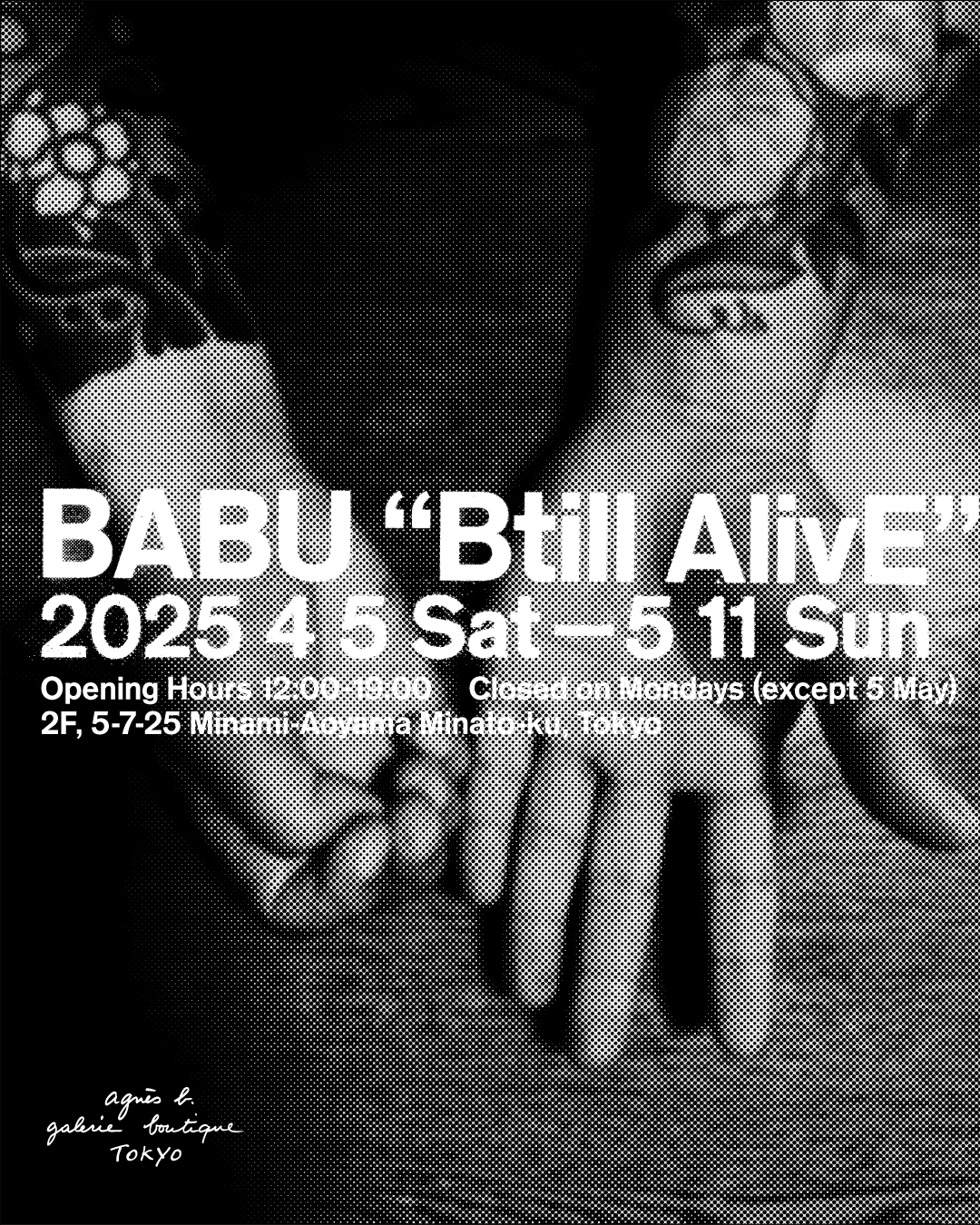Feature photo ©︎Shu Nakagawa
BABU is a street artist based in Kitakyushu City, Fukuoka. He skateboards in the post-earthquake disaster areas like Fukushima and Noto Peninsula. He makes art from found trash and discarded objects. His forearms are elaborately tattooed. And that’s about all the information he’s willing to share. BABU’s real name or family, or even what he looks like at this point, remain a mystery.

There’s no disputing the originality and flair of BABU’s art. He doesn’t have a recognizable signature style – just a blasé, street smart tone that’s in keeping with his unknowable personality. In 2018, he suffered from a stroke and disappeared from public view.
BABU has his share of back stories, told by artists and musicians he used to hang around with in Kitakyushu. Apparently, he was always cool, if a little violent. Once, BABU beat up a guy literally to a pulp after the latter insulted his dog. But no hard feelings on the part of the guy – he understood that it was just BABU being BABU and besides, it’s cool to get beaten up by a legend. Others say BABU grew up on the street after his parents thew him out of the house, which accounts for why BABU hates being surrounded by walls. The first time he worked inside a gallery for a joint exhibition, BABU nearly came to blows with the owner. Irritated and antsy at being confined in a closed space, BABU couldn’t control his temper. He later apologized to the owner, but after that, whenever he worked with galleries and museums, he made sure to work at lightning speed and get the hell out of the premises.
He must have gotten used to it. BABU’s work has been displayed at the Ueno Royal Museum, B Gallery of Beams Japan and Tokyo Arts University. BABU’s latest exhibition titled Btill AlivE is open to the public at the agnès b. gallery in Aoyama, Tokyo until May 11th.

In 2021, he resurfaced with an exhibition in Shibuya titled Babu – Yes No. At the time, he agreed to an extremely rare interview with hagamag.com. Here’s some of the Q&A.
Q: This is your first exhibition in four years. What do you think of Tokyo, and Shibuya?
BABU: Schmoozy. Laid back.Q: What would you do if 100 billion yen were to suddenly appear before your eyes?
BABU: I don’t want any of it, ever. No way.Q: What about your stroke, how are you coping with that?
BABU: Disability is tough.
At the Btill AlivE exhibition, there’s a video clip of BABU skateboarding through the streets of Noto, where the wreckage of houses and collapsed phone poles tell a tale of devastation and chaos. The camera has BABU’s back view and his feet on a handmade skateboard (also part of the display). But his entire body is encased in a white hooded protective suit, his face and head is completely covered.

Akemi Kouda-Riveau of agnès b. gallery, who has actually met BABU, says: “BABU is an extremely reticent artist and he’s said almost nothing specific about this particular exhibition.” She adds that after his stroke, one hand remains paralyzed. unmovable. “Even with that disadvantage, the speed with which BABU creates his works is legendary. He said that though he doesn’t have full control over his body, ‘speed’ is something he had acquired on the street and defined his artistic expression. At the same time, I get the feeling that BABU’s speed is his very own survival method.”
Survival is one of the themes BABU has consistently grappled with. The material BABU used to create the artwork for this exhibition was sourced from the roofs and construction wreckage that were repurposed and used by the residents in the aftermath of 3.11. Before his stroke in 2016, BABU released a video entitled 《GOSH!》, in which he skateboards through the ruins of Futabamachi wearing a Hazmat suit. Futabamachi is near the site of the Fukushima Daiichi nuclear power plant, and closed down for over a decade after the disaster. BABU repeats the theme in Btill AlivE when he skateboards through Noto in protective gear. There is no music or voice-over narration, just the sound of wheels on pavement, over and over and over.

BABU has displayed a certain ambivalence about categorizing his art form and seems cagey about being placed in the ‘modern art’ file. Now an art critic’s darling with works in high demand among modern art collectors, BABU has said nothing about his success or his future stance or…you know, all that stuff people usually talk about in interviews.
But Btill AlivE is, for all his reticence, surprisingly eloquent. No longer just the bad street kid from Kitakyushu, BABU’s works tell a tale of…recovery? Introspection? In any case, he’s less inclined to pick fights and more willing to play nice, if only a little. Btill AlivE is BABU saying he’s still alive. Coming from him, it feels like both an affirmation of life and a love letter.

